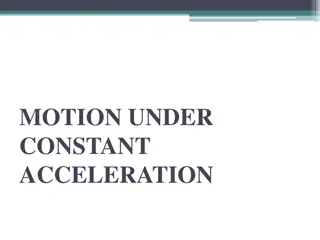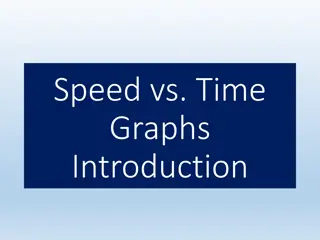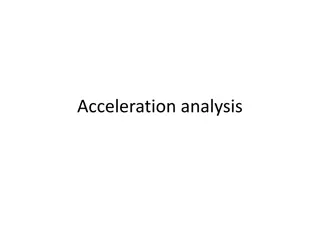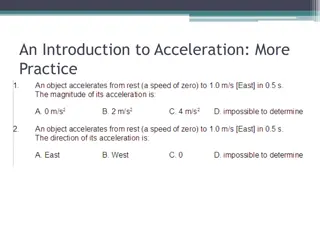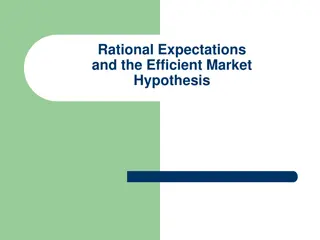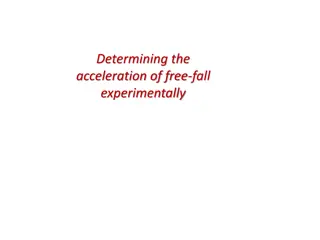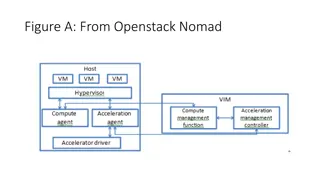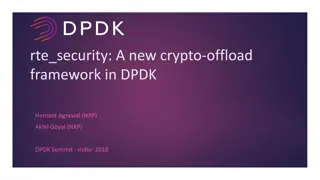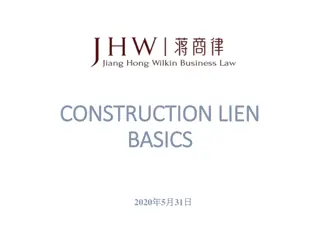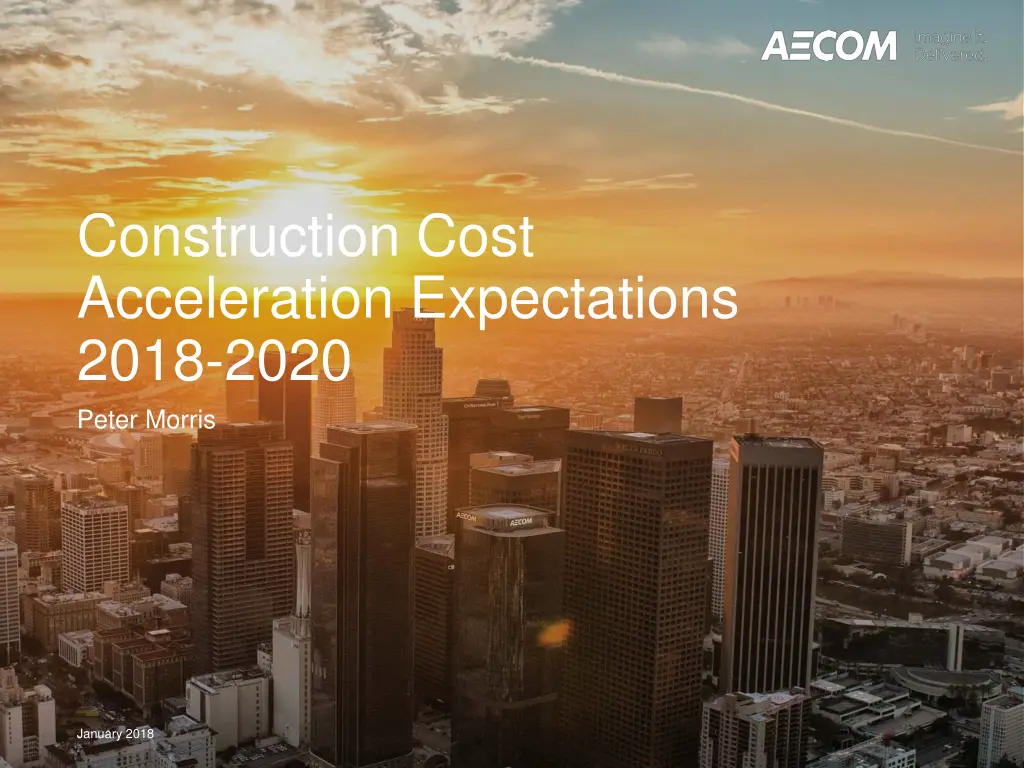
Construction Cost Acceleration Expectations & Risk Inflation Overview
Explore the factors driving construction cost acceleration like demand-pull inflation & risk inflation in this comprehensive guide. Understand the impact on project budgets and strategic management for cost control.
Download Presentation

Please find below an Image/Link to download the presentation.
The content on the website is provided AS IS for your information and personal use only. It may not be sold, licensed, or shared on other websites without obtaining consent from the author. If you encounter any issues during the download, it is possible that the publisher has removed the file from their server.
You are allowed to download the files provided on this website for personal or commercial use, subject to the condition that they are used lawfully. All files are the property of their respective owners.
The content on the website is provided AS IS for your information and personal use only. It may not be sold, licensed, or shared on other websites without obtaining consent from the author.
E N D
Presentation Transcript
Construction Cost Acceleration Expectations 2018-2020 Peter Morris January 2018
Construction Cost Acceleration Expectations 2018-2020 Escalation Drivers Why do costs change, and how do we forecast? Current Markets and Prospects What s happening now and where are we going? Strategic Escalation Management What can I do about it? 2 California Escalation Outlook
Escalation Drivers Why do costs change, and how do we forecast? 3 Presentation Title
Cost Push Inflation Labor Materials Code and Practice Changes in Code Changes in Practice Financial Taxes Interest Rates Direct wages Benefit costs Productivity Changes/Regulation Material Costs Transportation Regulation
Cost Push Inflation Normal Inflation Prevails in normal markets Usually driven by demand elsewhere (Think steel in 2004) Easy to Measure ENR/Means/Marshall & Swift Usually relatively stable Usually relatively predictable Lots of charts showing trends Generally runs at 2 4% per annum, plus 1% per annum for Code & Practice
Demand Pull Inflation Supply/Demand Balance Total Construction Demand Specific Building Capacity Capacity of Individual Trades Market Elasticity Size of market Ability to expand/pull in capacity Owner Profile Ease of doing business Payment record
Demand Pull Inflation Excess Inflation Prevails in stressed markets Driven by demand locally (Think CA in 2004 - 2007) Very hard to measure No systematic indexes Very volatile/non-linear Very un-predictable Employment activity a useful proxy Can run at over 10% per annum: can spike erratically
Risk Inflation Total Risk Assigned How much risk is transferred What is risk profile (long tail?) Level of Control How manageable is risk Is management and impact aligned Asymmetry of Risk Are the upside and downsides balanced
Risk Inflation Excess Inflation Prevails in risky markets Driven by uncertainty and poor risk allocation (Think Steel in 2004) Very hard to measure No systematic indexes Very volatile/non-linear Relatively predictable and avoidable Non-linear: can spike erratically
Demand Pull/Risk Inflation 30.00% Quality Risk Staffing Risk Completion Risk 25.00% Simple Project Difficult Project 20.00% Excess/Risk Profit Percentage 15.00% Low worker availability No more superintendents 10.00% Diminishing worker quality Low superintendent availability 5.00% 0.00% 80% 85% 90% 95% 100% Employment Saturation
California Markets What s happening now and where are we going? 11 Presentation Title
California Markets 1,200,000 1,000,000 -115,000 -400,000 800,000 600,000 400,000 200,000 0 Construction Employment
California Markets 15% Excess Demand 10% 5% Normal Market 0% -5% -10% -15% Excess Capacity -20% -25% Jan-01 Jan-02 Jan-03 Jan-04 Jan-05 Jan-06 Jan-07 Jan-08 Jan-09 Jan-10 Jan-11 Jan-12 Jan-13 Jan-14 Jan-15 Jan-16 Jan-17 Jul-01 Jul-02 Jul-03 Jul-04 Jul-05 Jul-06 Jul-07 Jul-08 Jul-09 Jul-10 Jul-11 Jul-12 Jul-13 Jul-14 Jul-15 Jul-16 Jul-17 Construction Employment Rate of Change
California Markets 20% Inland Empire 15% Annual Growth Rate (%) 10% LA Coast Central Valley 5% Bay Area San Diego North East/Sierra Sac-NCV 0% 0.0% 2.0% 4.0% 6.0% 8.0% 10.0% 12.0% -5% Annualized 5 Year Growth Rate (%)
California Markets North Colusa, Del Norte, Glenn, Humboldt, Lake, Lassen, Mendocino, Modoc, Plumas, Shasta, Sierra, Siskiyou, Tehama, Trinity Low growth short and long term Elasticity Very small market Lower labor rates Hard to attract labor Largely Cost Push, except for large/complex projects. Escalation: 3% to 5%
California Markets Sacramento/Northern Central Valley Amador, El Dorado, Nevada, Placer, Sacramento, Sutter, Yolo, Yuba Low short term growth after lengthy strong growth Elasticity Mid-size market Lower labor rates than Bay Area Hard to attract labor Demand Pull due to strength of Bay Area Escalation highest on large/complex projects Escalation: 4% to 6%
California Markets Bay Area Alameda, Contra Costa, Marin, Napa, San Francisco, San Mateo, Santa Clara, Solano, Sonoma Moderate short term growth after lengthy strong growth Elasticity Very large market Very high labor rates Can pull labor from other markets, but limited capacity elsewhere High level of Demand Pull Escalation high across the market Poor bid coverage / Occasional bid spikes Escalation: 5% to 8%, with spikes
California Markets Central Coast Monterey, San Benito, San Luis Obispo, Santa Barbara, Santa Cruz Strong short term growth after lengthy strong growth Elasticity Small market Lower labor rates Hard to attract labor Demand Pull due to strength of Bay Area Escalation highest on large/complex projects Poor bid coverage / Occasional bid spikes Escalation: 5% to 7%, with spikes
California Markets San Joaquin Valley Fresno, Kern, Kings, Madera, Merced, San Joaquin, Stanislaus, Tulare Strong short term growth after lengthy moderate growth Elasticity Mid-size market Lower labor rates than Bay Area and LA Hard to attract labor Demand Pull due to strength of Bay Area Escalation highest on large/complex projects Poor bid coverage / Occasional bid spikes Escalation: 5% to 7%, with spikes
California Markets Sierra/East Alpine, Calaveras, Inyo, Mariposa, Mono, Tuolumne Strong growth short after very weak long term Elasticity Very small market Lower labor rates Hard to attract labor Largely Cost Push, except for large/complex projects. Escalation: 3% to 5%
California Markets Los Angeles Los Angeles, Orange, Ventura Strong short term growth after lengthy strong growth Elasticity Very large market High labor rates Can pull labor from other markets, but limited capacity elsewhere Very high level of Demand Pull and Risk Inflation Escalation high across the market Poor bid coverage / Occasional bid spikes Escalation: 6% to 9%, with spikes
California Markets Inland Empire Imperial, Riverside, San Bernardino Extremely strong short and long term growth Elasticity Mid-sized market Lower labor rates Hard to attract labor Very high level of Demand Pull and Risk Inflation Escalation high across the market Poor bid coverage / Occasional bid spikes Escalation: 8% to 10%, with spikes
California Markets San Diego San Diego Moderate short term growth after lengthy strong growth Elasticity Mid-size market Lower labor rates than LA Hard to attract labor Demand Pull due to strength of Los Angeles Escalation highest on large/complex projects Poor bid coverage / Occasional bid spikes Escalation: 4% to 6%, with spikes
Strategic Escalation Management What can I do about it? 24 Presentation Title
Strategic Inflation Management 1. Be Attractive! Keep the project simple, clean, winnable Have a clear scope: minimize uncertainty Keep the proposal simple Be a good owner: prompt pay, good management Limit bid alternates Plan Ahead Time bids Outreach and marketing Bundle projects Resolve Risk and retain as much as possible Eliminate Epistemic risk where possible Align risk transfer with control transfer Aleatoric risk transfer is usually overpriced Pool Contingencies 2. 3. 25






